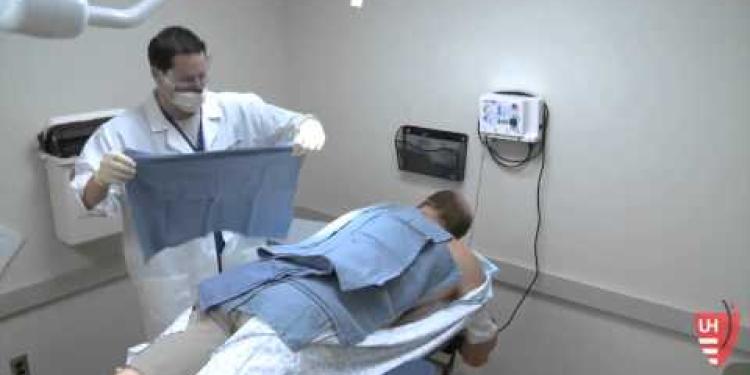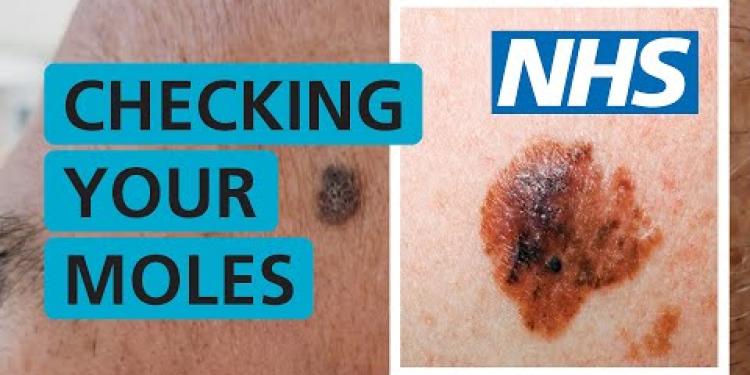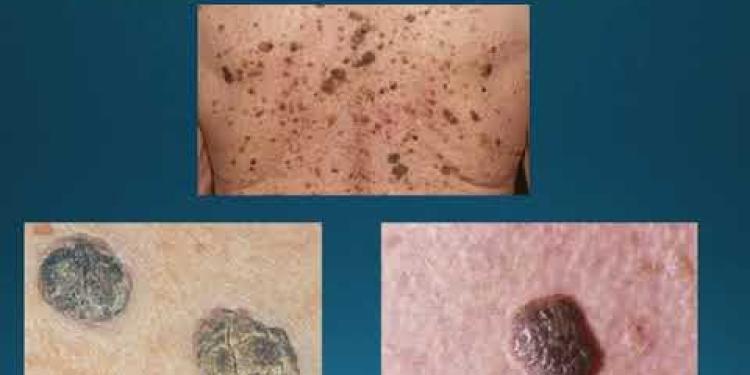Important Information On Using This Service
- Ergsy carefully checks the information in the videos we provide here.
- Videos shown by YouTube after a video has completed have NOT been reviewed by ERGSY.
- To view, click the arrow in the center of the video.
Using Subtitles and Closed Captions
- Most of the videos you find here will have subtitles and/or closed captions available.
- You may need to turn these on and choose your preferred language.
Turn Captions On or Off
- Go to the video you'd like to watch.
- If closed captions (CC) are available, settings will be visible on the bottom right of the video player.
- To turn on captions, click settings.
- To turn off captions, click settings again.
Find A Professional
Videos from Ergsy search
More Videos of Interestdiagnosis
What is a mole biopsy?
A mole biopsy is a medical procedure in which a sample of tissue is taken from a mole (also known as a nevus) for examination under a microscope. The purpose of a mole biopsy is to determine whether the mole is cancerous (malignant) or non-cancerous (benign).
There are different types of mole biopsies, including:
- Punch Biopsy: In a punch biopsy, a special tool called a punch is used to remove a small, cylindrical sample of tissue from the mole. The area is typically numbed with a local anesthetic before the procedure. The removed tissue is then sent to a laboratory for examination by a pathologist.
- Excisional Biopsy: In an excisional biopsy, the entire mole is surgically removed along with a small margin of surrounding skin. This type of biopsy is often used when a mole appears suspicious or when a complete sample is needed for examination. The removed tissue is sent to a laboratory for analysis.
- Incisional Biopsy: An incisional biopsy involves removing only a portion of the mole for examination. This may be done if the mole is large, and removing the entire mole would result in significant scarring or if only a portion of the mole appears abnormal.
- Shave Biopsy: A shave biopsy involves using a scalpel or razor blade to shave off the top layers of the mole for examination. This type of biopsy is typically used for moles that are raised above the skin surface.
After the mole biopsy, the tissue sample is sent to a pathology laboratory, where it is examined under a microscope by a pathologist. The pathologist will assess the cells in the tissue sample to determine whether there are any signs of cancer, such as abnormal cell growth or changes in cell structure.
Based on the results of the mole biopsy, further treatment or monitoring may be recommended. If the biopsy indicates that the mole is cancerous, additional procedures such as further excision or Mohs surgery may be necessary to remove any remaining cancerous cells. If the biopsy shows that the mole is benign, no further treatment may be needed, although regular monitoring of the area may be recommended.
Mole Biopsy Finds Melanoma
Understanding Melanoma
Melanoma is one of the most serious forms of skin cancer. It originates in melanocytes, the cells responsible for producing melanin, the pigment that gives skin its colour. Unlike other skin cancers, melanoma can spread to other parts of the body if not detected and treated early, making timely diagnosis crucial. Regular skin checks and biopsies of suspicious moles are essential in preventing the escalation of this deadly illness.
The Importance of Mole Biopsies
A mole biopsy is a simple and effective procedure where a dermatologist removes a small sample of a mole for laboratory examination. This is particularly vital for individuals in the United Kingdom, where instances of melanoma have been increasing, possibly due to changes in sun exposure habits and tanning practices. A biopsy can help detect abnormal cells that could indicate melanoma, allowing for timely intervention and treatment.
Identifying Suspicious Moles
Recognising the signs of potentially dangerous moles can be lifesaving. The ABCDE rule is a commonly used guideline:
- Asymmetry: One half of the mole does not match the other half.
- Border: Edges are irregular, ragged, or blurred.
- Color: Multiple colours such as brown, black, tan, and sometimes red or blue.
- Diameter: The mole is larger than 6mm (about the size of a pencil eraser).
- Evolving: Any change in size, shape, or colour.
After a Melanoma Diagnosis
If a biopsy finds melanoma, further measures will be taken to identify the stage and extent of cancer. Early-stage melanomas are often treatable with surgery alone. More advanced cases may require additional treatments such as radiation therapy, immunotherapy, or targeted treatments. In the UK, the NHS provides comprehensive care and support for melanoma patients, ensuring access to the latest treatments and clinical trials.
Preventive Measures
Preventing melanoma involves protecting your skin from excessive UV radiation. This includes using sunscreen with high SPF, wearing protective clothing, and avoiding tanning beds. Regular skin examinations by a dermatologist, especially for those with a family history of skin cancer or a large number of moles, are recommended to catch melanoma early.
Frequently Asked Questions
What is a mole biopsy?
A mole biopsy is a medical procedure in which a small sample of skin tissue from a mole is removed and examined under a microscope to determine if it’s cancerous.
What is melanoma?
Melanoma is a serious form of skin cancer that begins in cells called melanocytes, which produce the pigment melanin that colours the skin.
Why is a mole biopsy important?
A mole biopsy is important to diagnose melanoma early, as early-stage melanoma can often be treated successfully. Delay in diagnosis and treatment can lead to the cancer spreading to other parts of the body.
How is a mole biopsy performed?
A mole biopsy can be performed through several methods, such as shave biopsy, punch biopsy, or excisional biopsy. The choice of method depends on the size and location of the mole.
Is a mole biopsy painful?
The procedure is usually performed under local anaesthesia, so you might feel a slight sting from the anaesthetic injection but should not feel pain during the biopsy itself.
What happens after a mole biopsy?
The tissue sample is sent to a laboratory for examination by a pathologist. Results can take a few days to a couple of weeks. Your doctor will discuss the results and next steps with you.
What should I do if my mole biopsy finds melanoma?
If your biopsy indicates melanoma, your doctor will discuss a treatment plan with you. This may involve surgery to remove any remaining cancerous tissue, and possibly additional treatments like immunotherapy, radiation, or chemotherapy.
How can I reduce my risk of melanoma?
Protect your skin from excessive sun exposure by using sunscreen, wearing protective clothing, and avoiding tanning beds. Regularly check your skin for any new moles or changes in existing moles and consult a doctor if you notice anything suspicious.
What does it mean if a mole is atypical?
An atypical mole, or dysplastic nevus, has irregular characteristics that differ from a normal mole. These moles are not cancerous but may have a higher risk of developing into melanoma and should be monitored closely.
How often should I check my moles for changes?
It is advisable to check your skin once a month for any new moles or changes in existing moles. Use a mirror or have someone help you check hard-to-see areas.
Can melanoma be cured if caught early?
Yes, melanoma can often be cured if detected and treated in its early stages. Early diagnosis and treatment are crucial to prevent the spread of melanoma.
What are the warning signs of melanoma?
Warning signs include a mole that changes in size, shape, or colour, has irregular borders, multiple colours, or is asymmetrical. Other signs include itching, bleeding, or a sore that doesn’t heal.
Is melanoma more common in certain skin types?
Melanoma can affect anyone, but it is more common in individuals with fair skin, light hair, and light eyes. However, people with darker skin can also develop melanoma.
How is melanoma treated?
Treatment depends on the stage of the melanoma. It often includes surgical removal of the tumor, and may involve additional therapies such as immunotherapy, targeted therapy, chemotherapy, or radiation.
Where can I get a mole biopsy in the UK?
Mole biopsies can be performed by dermatologists in hospitals, clinics, and specialised skin cancer centres across the UK. You should consult your GP for a referral to a qualified specialist.
Useful Links
Useful links from: Skin cancer education
- NHS - Skin Cancer This NHS page provides comprehensive information about skin cancer, including types, symptoms, causes, diagnosis, and treatment options.
- Cancer Research UK - Skin Cancer Cancer Research UK's dedicated section on skin cancer, offering detailed information about signs, symptoms, stages, types, treatment, and prevention.
- Macmillan Cancer Support - Skin Cancer Macmillan Cancer Support provides resources and support for those affected by skin cancer, including guides on treatment, managing symptoms, and coping with diagnosis.
- British Skin Foundation - Skin Cancer The British Skin Foundation offers information on the different forms of skin cancer, their symptoms, causes, and treatment options as well as research into the condition.
More Videos of Interestdiagnosis
Have you found an error, or do you have a link or some information you would like to share? Please let us know using the form below.
- Ergsy carfully checks the information in the videos we provide here.
- Videos shown by Youtube after a video has completed, have NOT been reviewed by ERGSY.
- To view, click the arrow in centre of video.
- Most of the videos you find here will have subtitles and/or closed captions available.
- You may need to turn these on, and choose your preferred language.
- Go to the video you'd like to watch.
- If closed captions (CC) are available, settings will be visible on the bottom right of the video player.
- To turn on Captions, click settings .
- To turn off Captions, click settings again.


